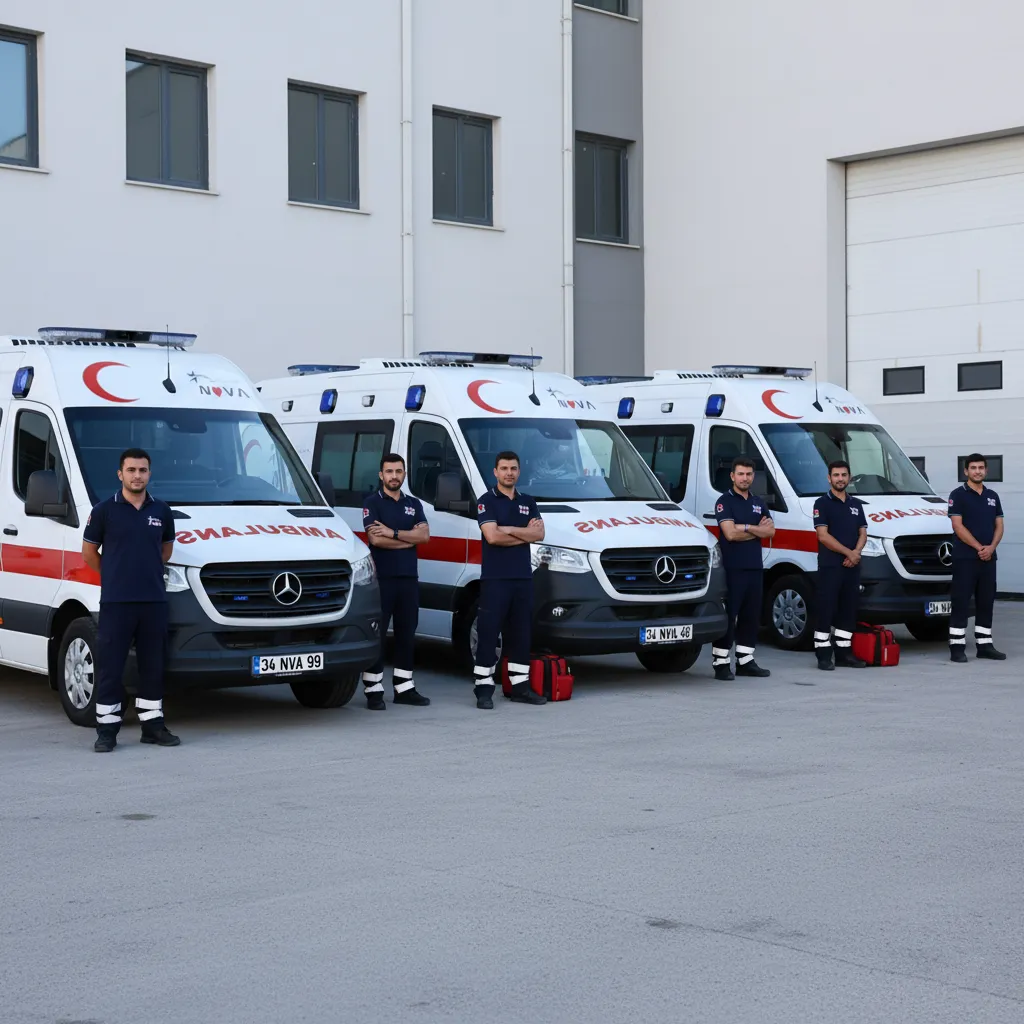Modern Ambulance Equipment and Team Standards
Basic equipment that should be in current ambulances and competencies that the emergency health team should have.
💡Key Takeaways
- Basic Equipment: Defibrillator, ventilator, and trauma sets are vital.
- Team Standard: Trained staff consisting of doctor, paramedic, and EMT is essential.
- Continuous Training: Teams must be kept ready with current protocols and simulations.
- Selection Criteria: Question the ambulance's equipment and personnel competence.

Seeing an ambulance as just sirens and lights is a big misconception. A modern ambulance must have equipment as much as a small intensive care unit and a trained team who knows how to use it. In this article, we summarize the basic equipment and team standards that should be in modern ambulances.
Basic Equipment That Should Be in Modern Ambulances
Major equipment expected to be found in an Emergency Aid Ambulance complying with Ministry of Health regulations:
- Monitor/Defibrillator: To monitor heart rhythm and apply shock when necessary.
- Oxygen and Respiratory Support Equipment: Oxygen cylinders, mask, bag-valve mask (ambu), ventilator if necessary.
- Medications: Basic medication sets used in emergencies (heart, allergy, pain, sedation, etc.).
- Trauma Set: Neck collars, splints, spine board, burn and bleeding control sets.
- Birth and Pediatric Set: Special materials for emergency birth and pediatric patients.
Nova Ambulans vehicles accept keeping this equipment current and well-maintained as a standard.
Team Standards: Who Should Take Part?
In a modern ambulance, not only a driver who knows how to drive, but a team trained in emergency health should be present:
- Doctor (in cases where necessary)
- Paramedic (Trained in Advanced Life Support)
- Emergency Medical Technician (EMT)
The team must be able to apply many interventions beyond basic first aid in the field:
- Opening vascular access
- Advanced airway management
- Rhythm monitoring and medication administration
Continuous Training and Simulation Studies
Medical information and guidelines are constantly updated. Therefore, it is expected that:
- Teams regularly participate in theoretical training and practical simulations
- Master new devices and current treatment protocols
- Become competent in scene safety, disaster management, and communication
This increases both patient safety and team harmony.
What Should You Pay Attention to When Choosing an Ambulance?
Do not hesitate to ask these questions when receiving private ambulance service:
- Are your ambulances at Emergency Aid Ambulance standard?
- Which monitor, defibrillator, and ventilator systems are in the vehicle?
- What is the title and experience of the personnel working in the team?
- Are your regular maintenance and disinfection records kept?
If you can get clear and transparent answers to these questions, you are in the right place. As Nova Ambulans, we aim to offer modern equipment and high training standards together in all our services.
Frequently Asked Questions
Is private ambulance very different from 112 ambulance in terms of equipment?
Both ambulance types must comply with the minimum standards determined by the Ministry of Health; basic equipment is largely similar. The difference often emerges in service scope, additional comfort elements, and planning flexibility; talking to the company about details is the healthiest way.
How can I understand if the ambulance is modern when I call by phone?
During the call, you can ask clear questions about monitor/defibrillator, ventilator, trauma sets, and pediatric equipment. The company official giving transparent and consistent answers about equipment and personnel qualification is an important sign of trust.
Is there special equipment and trained personnel for pediatric patients?
Different sizes and features of equipment and personnel experienced in communicating with children are required for pediatric patients. You should definitely state that there is a pediatric patient during reservation and ask for information about pediatric equipment and team experience.